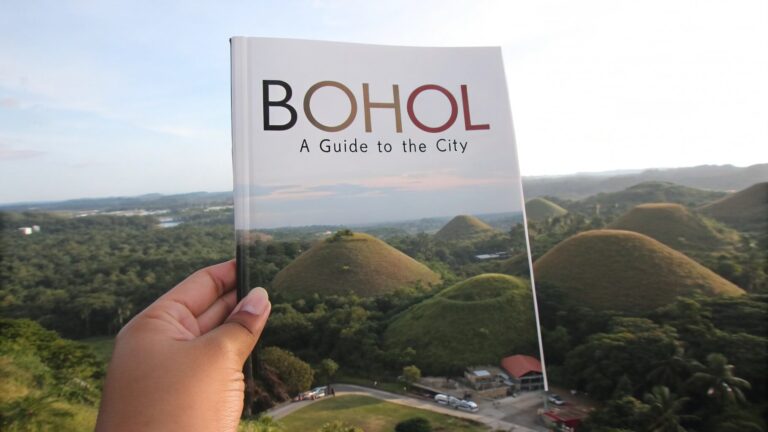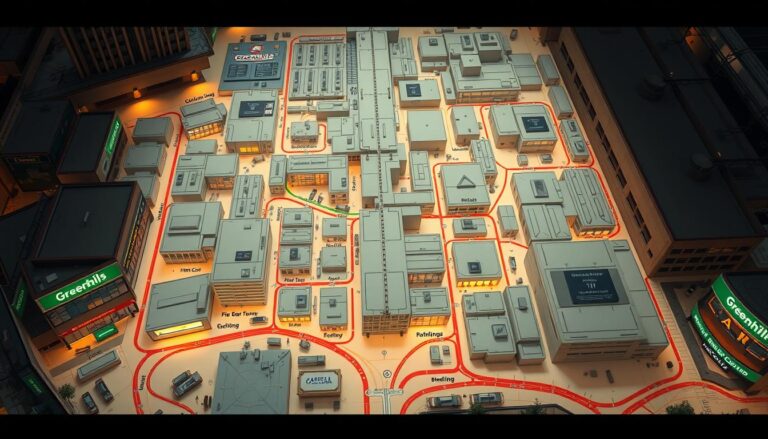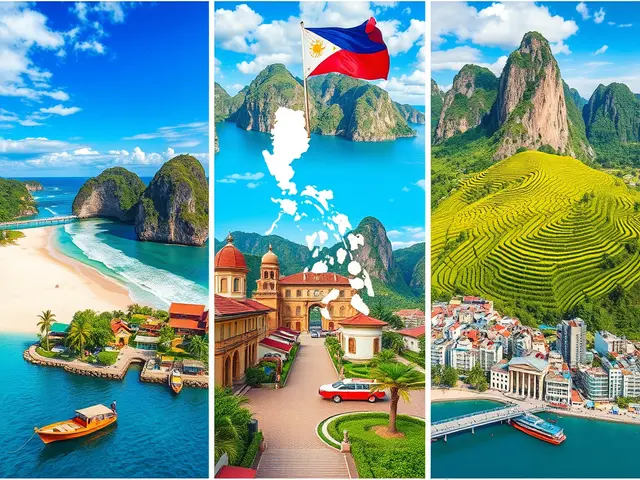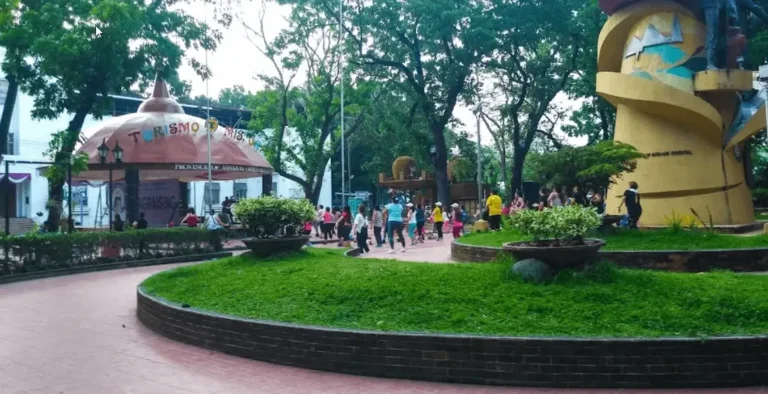What’s The Most Convenient Way To Go From Manila to Anilao ?
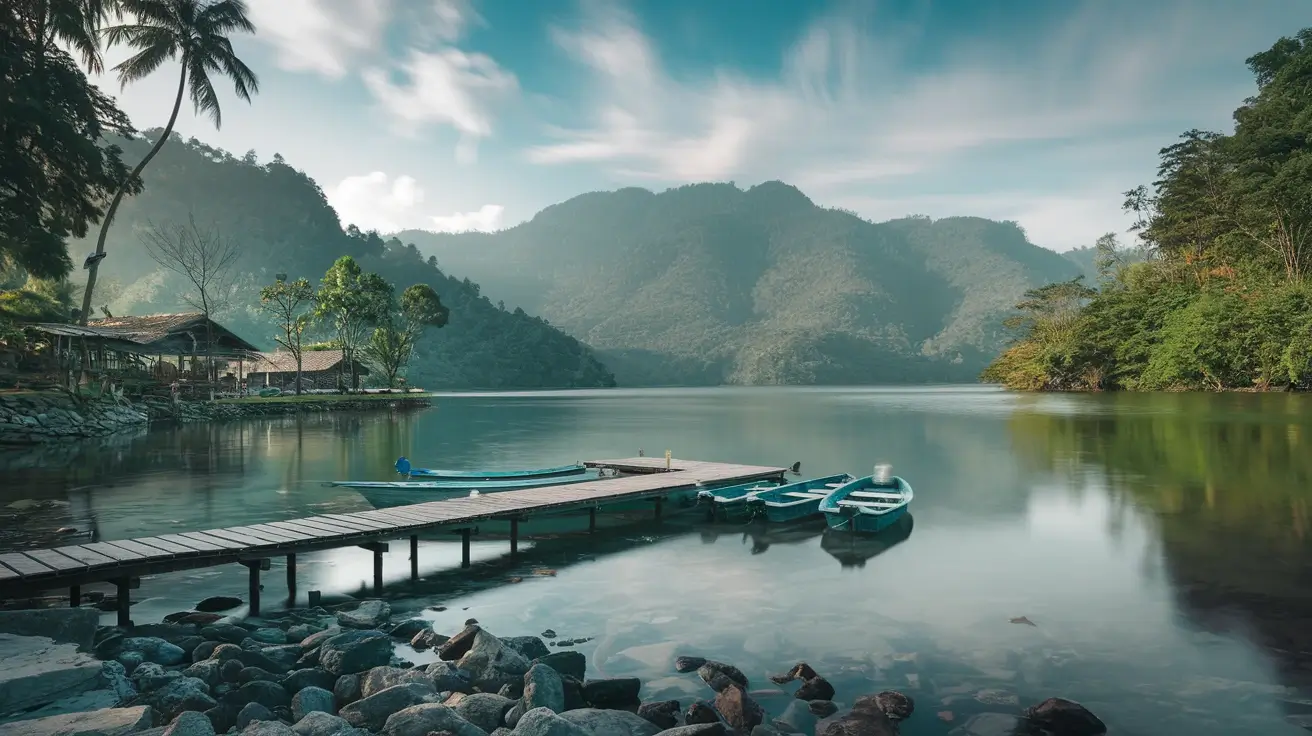
The most convenient way to get from Manila to Anilao is by private vehicle. Travel time is around two and a half hours via the express route using the South Luzon Expressway (SLEX) and STAR Tollway. This route provides an easy and straightforward drive, making it a great option for those looking for a little more comfort and flexibility.
Buses going in the direction of Batangas City or Lemery are good options too if you don’t have access to a private vehicle. From there, local jeepneys or tricycles will be able to bring you to Anilao. Ride-hailing apps such as GrabCar might work, but it can be hit or miss based on where you’re coming from specifically.
Each option provides a different combination of convenience and value. These options will suit all tastes and budgets, ensuring your trip to this must-see diving hotspot is smooth and easy.
Key Takeaways
- Public transportation such as buses and vans are less expensive but travel times are significantly increased. They are perfectly suited for those traveling alone or light on their baggage.
- Private vehicles are the most comfortable and convenient mode, particularly for families or groups. They have higher costs and need experience driving in the Philippines.
- Ride-sharing and car rentals offer a happy medium of convenience and cost. These are a boon for travelers seeking a little more freedom but without car ownership.
- Factor in your budget, time restrictions, and how many people are in your group to decide which is the most convenient option. Each option comes with its own trade-offs, so consider what matters most to you.
- Plan ahead by checking weather conditions, packing essentials, and researching accessibility options for Anilao resorts to ensure a smooth trip.
- Anilao is great for so much more than diving. Don’t miss out on snorkeling, beach bumming, sampling local cuisine, and visiting attractions nearby for a complete adventure.
Overview of Transportation Options
You can take public transport for convenience, private transport for flexibility, or ride-sharing for ease. There’s really an option for every pet owner! Below, we dig into the nitty-gritty to help you make the most of your trip.
Public Transport Choices
In the long run, public transportation is the most cost-effective choice. From Manila, the buses going to Batangas Grand Terminal ranges from $2.10 to $3.20, depending on where you’re coming from in Manila. The ride is usually two to three hours.
Once through the terminal, get on a jeepney heading to Anilao for ~$0.65. If you are going to nearby Tingloy Island, public boats leave from Anilao Port. The boats can accommodate up to 10 passengers, but note that the last trip back from Tingloy Port is at 2:30 p.m.
If you’re visiting Masasa Beach, tricycles can be hired for $0.50 to access homestays or hiking trails.
Private Vehicle Options
Driving is less expensive, more flexible, and a faster door-to-door trip. The route uses the South Luzon Expressway (SLEX) and STAR Tollway, taking you directly to Anilao. The drive is about 2.5 to 3 hours without stops.
There’s parking at the port for anyone taking trips to the islands.
Ride-Sharing and Car Rentals
Ride-sharing services like Uber and Lyft are an option but will be more expensive due to the distance. Car rentals offer more freedom, letting you discover Anilao and its nearby regions at your own pace.
With a rental, you’ll be able to make your own scenic route and stop wherever you want for the most beautiful road trip experience.
Estimated Travel Times and Costs
Traveling from Manila to Anilao, there are a few different options available, with varying times and costs. Knowing these will allow you to get the form of payment that is most convenient for you.
Public Bus and Van Travel Times
Especially when traveling with a family or group, public transportation is usually the most cost-effective choice. Using public transportation, a bus takes about 2 hours on the EDSA-Kamias route to get to Batangas Grand Terminal. The fare for this journey is PHP 249, or about $4.40.
Catch a jeepney to Talaga Port directly from the terminal. The ride is under 2 hours and it only costs PHP 70 ($1.25)! If you’re wondering how much the public boat fare to Tingloy costs, it’s PHP 160 ($2.85) one way.
Keep in mind that you should pad in PHP 100 ($1.80) for environmental fees and PHP 5 ($0.10) for terminal fee. Remember, the last boat back from Tingloy departs at 5:00 PM, so timing is essential.
Private Car Travel Time and Expenses
Driving a private car is pretty much the opposite—flexible, fast, convenient. The direct route from Manila to Talaga Port will take around 3.5 to 4 hours, depending on traffic. Fuel costs may fluctuate, but you could pay around PHP 1,200 ($21.40) for a round trip.
Parking charges at the port might be a consideration, although these are typically very low.
Comparing Costs of All Methods
For a family of four, public transportation is roughly PHP 2,384 ($42.50) round trip without factoring in the additional cost of island hopping tours. Renting a boat for island hopping from Anilao will cost PHP 4,500 ($80.30) for a 10-person boat or PHP 2,000 ($35.70) for four people from Masasa Beach.
A private car would likely be cheaper for groups of three or more, particularly if sharing the cost of gas and/or tolls. Each approach is a tradeoff based on what you value most—cost, time or ease of use.
Choosing the Best Transportation Option
Finding the ideal way to travel from Manila to Anilao depends on balancing cost, time, comfort, group size, and ease of access to resorts. With travel options from affordable public transit lines to luxurious private charters, it’s important to consider all your options.
1. Consider Your Budget
If you’re looking to save some money, taking public transportation is the most affordable option. Fares for buses going directly to Batangas Grand Terminal are around 145 pesos (from Cubao), 140 pesos (from LRT-Buendia), or 115 pesos (from Alabang).
From there, jeepneys to Anilao cost around $0.65. For anyone traveling on to Tingloy, it’s just $1.40 by public boat. The convenience and flexibility provided by private boats from Masasa Beach is very good. While they usually run you about $53, you can get as low as $44 if you haggle the price down.
2. Evaluate Your Time Constraints
Traveling by bus and jeepney takes under two hours. If you’re hoping to catch public transportation when it’s full, you’ll be waiting a long time.
For faster trips, private vehicles or boat rentals are quicker but more expensive.
3. Assess Your Comfort Preferences
Those who prioritize comfort may be less willing to take transit and may instead choose private transport. Though cheap, buses and jeepneys tend to be crowded and full.
With personal boats or vehicles, you can guarantee a comfortable trip, particularly when carrying bags or other items.
4. Factor in Group Size
Larger groups are helped by the shared costs with private options. For example, splitting a $53 boat rental between six people easily makes this option affordable.
5. Plan for Accessibility to Anilao Resorts
Anilao’s resorts are convenient to get to, making them ideal for groups coming via private vehicle or jeepney. For Tingloy’s attractions, such as Masasa Beach, private boats are kept at bay by public boats that guarantee budget-friendly access.
Travel Tips for a Smooth Journey
Making your way from Manila to Anilao, Batangas is a route taken often by those looking for some rest or an adventure by the water. No matter if you plan on driving or traveling by public transport, a lot of advance work can turn this trip into a smooth experience. Below are a few more useful travel tips to help you prepare and ensure your trip goes smoothly.
Plan Your Trip in Advance
The easiest method to get to Anilao is definitely by car. By car it’s roughly 3 – 4 hours, depending on traffic. If you opt for the public transport, there are buses leaving for Batangas City once per hour.
They depart from major terminals including Buendia, Cubao, and Alabang. Fares are $2.50 – $3.00, with travel times of 1.5 hours minimum during off peak periods. Once already in Batangas City, make sure you don’t take the roads through Lipa, it’ll add a lot of time.
At Anilao Port, tricycles to nearby resorts are plentiful, generally costing $1 to $1.75 for a 10-minute ride.
Pack Essentials for the Trip
Pack your best walking shoes, sun screen, and water resistant bags for your personal items. If scuba diving is on your itinerary, you can usually rent equipment on site.
Whatever you do, bring your own and you’ll ensure yourself a better fit and better quality. Snacks and refillable water bottles are a must, particularly on longer bus trips.
Check Weather Conditions Before Traveling
Peak season is typically from March to May, but the best time to visit Anilao is between October and June. Skip the weekends if you’re going to the popular destinations like Masasa Beach, which get a bit busier.
Best Time to Visit Anilao
Overall, it pays to time your trip to Anilao right. If diving is your main objective, then visiting at the right time is key. This is how the weather, tourist volume, and water conditions look year-round. Consider these factors when planning your visit!
Peak Seasons for Diving
The peak diving season in Anilao is from October to early June. From November to April you’ll find some of the best diving conditions around. This is the best time to visit Anilao because the weather is dry, the waters are calm, and the visibility is optimal.
For divers, January and February are particularly excellent months because of the cooler air temperatures and blue skies. Anilao’s underwater biodiversity is at its most colorful during this time so it’s a period often favored by underwater photographers and marine life lovers.
Dive operators are in high season, so everything is up and running during these months. They offer personalized instruction, expert guidance, and exclusive access to the top dive spots.
Off-Peak Travel Benefits
Visiting during off-peak season, between July and October, is worth it if you can avoid the rain. The crowds thin out too, so accommodations and dive tours are usually much cheaper. If you can swing it, weekdays are especially quiet, providing the opportunity for a more peaceful experience.
Do not travel on the weekends, as locals tend to use the weekend break to visit close resorts. Though rain can throw a wrench in plans, seasoned dive operators often find ways to make sure your dives are safe, enjoyable, and memorable.
Weather Patterns in Anilao
Weather is an important consideration in planning your trip. The dry season stretches from October to May, providing the most reliable weather. January to April is the best time to visit Anilao if you want the least rainfall.
Rainy months, July through October, result in unpredictable conditions that can test even the most experienced divers. If you’re not primarily coming here to dive, the abundant greenery and cooler weather make this an attractive time to visit.
Do note that you should always keep an eye on weather forecasts, as even during the dry season surprises can occur!
Things to Do in Anilao Beyond Diving
Diving may be what brings many visitors to Anilao, but this Philippine paradise is much more than an underwater oasis. Anilao truly offers the ideal escape for each and every one. From family fun to romance or relaxation, Anilao’s charming blend of activities, adventures, and cultural experiences has something for everyone.
Snorkeling and Beach Activities
If Anilao is known as a diving hotspot, it’s definitely known for its mind-blowing snorkeling spots too. Rich coral gardens and colorful schools of fish are an everyday sight in the clear blue waters. This makes it a great option for non-divers and multigenerational families vacationing together.
Several resorts offer access to pristine beaches, where you can spend the day kayaking or paddleboarding, giving you a taste of adventure in every day. For visitors who choose one of the many beachside resorts, non-motorized water sports, swimming pools, and game rooms enhance the experience. You can relax on the beach with a good book or just enjoy the sunny weather.
Exploring Local Cuisine
Anilao allows you to experience Filipino culture right on your plate. Small local eateries and seaside restaurants offer up the freshest seafood, grilled specialties, and local desserts including well-known halo-halo. Whether you’re eating at a mom and pop restaurant or a luxury resort, the food tastes fresh and true to the land and sea.
Visiting local markets is another great way to experience the region’s culinary delights. You can find a variety of ingredients and dishes that reflect the local flavors and traditions.
Visiting Nearby Attractions
Outside of the beaches, you can explore the town around Anilao to find even more of what this island paradise has to offer. Plus, a day trip to Verde Island is definitely a good option for anyone looking for a change of pace and scenery.
Though famous for its diving, the beauty of Batangas island above the water is equally arresting. Take a leisurely day exploring local shops and markets to pick up some quality handmade mementos. Enjoy a quiet walk around the town to engage with the local culture.
Practical Information for Travelers
It’s easy to travel from Manila to Anilao, but understanding a few basics will help ensure that your trip goes off without a hitch. This section includes practical information to help you with currency, staying connected, and staying safe as you enjoy your vacation.
Local Currency and Payment Methods
The local currency is the Philippine Peso (PHP). In smaller towns such as Anilao, cash is still the mode of transaction for most people. Although most expensive dive resorts and restaurants do accept credit cards, smaller places and tricycle drivers can’t.
More importantly, it’s really practical to have a bunch of smaller denominations on hand for tipping and quick purchases. There are few ATMs in Anilao, so plan to withdraw cash in Manila or Batangas City.
Mobile Connectivity and Internet Access
Mobile coverage in Anilao is very strong, with major mobile operators such as Globe and Smart providing robust service. Remote diving locations can be more difficult due to signal strength.
Most resorts offer complimentary Wi-Fi, but speed may be inadequate. If you want to be always connected, you can buy a local SIM card with a data plan.
Safety Tips for Tourists
Anilao is as safe a destination as you’ll find, but taking some simple precautions is always a smart idea. Practice caution when traveling through congested pedestrian areas or on transit.
If you plan on scuba diving, getting travel insurance that covers high-risk water activities is a must. Finally, if traveling during rainy season months, monitor weather reports to prevent travel disruptions.
Conclusion
Manila to Anilao travel is actually quite convenient if you know which mode of transportation to take. So you select private cars for speed, buses for low cost or vans for convenience. Well, no matter your need or budget, there’s a solution just right for you! Remember that the trip is not just about point A to point B, it’s the beginning of your adventure! Anilao is more than just a divers’ paradise, as lush landscapes, azure waters, and welcoming locals await in this beautiful region of Batangas.
Plan ahead, pack smart, and savor each second of your adventure. Getting there is a snap with the travel advice below. Excited to get to know Anilao? Plan your trip today and prepare for a truly memorable escape.
Frequently Asked Questions
What’s the fastest way to travel from Manila to Anilao?
The most convenient way is the fastest, which is by private car or taxi. Should only take 2, 2.5 at most hours, depending on traffic. It’s the most convenient option, and most flexible if you’re bringing along diving gear.
How much does it cost to travel from Manila to Anilao?
Private car/taxi is $50 to $100. Bus fares are very affordable, around $3-$5. Vans will be about $10-15/person. The prices change depending on comfort and convenience.
Are there buses from Manila to Anilao?
Are there any buses from Manila to Batangas City? From there, you can take a jeepney or tricycle to Anilao. This is the cheapest option but is much longer and requires more transfers.
What’s the cheapest way to get to Anilao?
The most inexpensive option is taking a bus and jeepney combo. The bus ride to Batangas City runs $3-$5. Heck, a local jeepney ride to Anilao wouldn’t even be $2.
Is there public transportation directly to Anilao?
There are no direct buses that head to Anilao. You will have to connect from Batangas City via jeepney or tricycle. It’s a little longer but very economical.
When is the best time to visit Anilao?
Ideal conditions prevail from November through May. It’s the middle of dry season and visibility for diving is top notch. Try to stay clear of the rainy season for a more enjoyable trip.
What are the main activities in Anilao besides diving?
Diving will be the crowning jewel of your stay! From snorkeling and hiking to Mt. Gulugod Baboy, and island hopping to floating in quiet beaches, there’s plenty to do. Anilao is truly a place that has it all for everybody.

